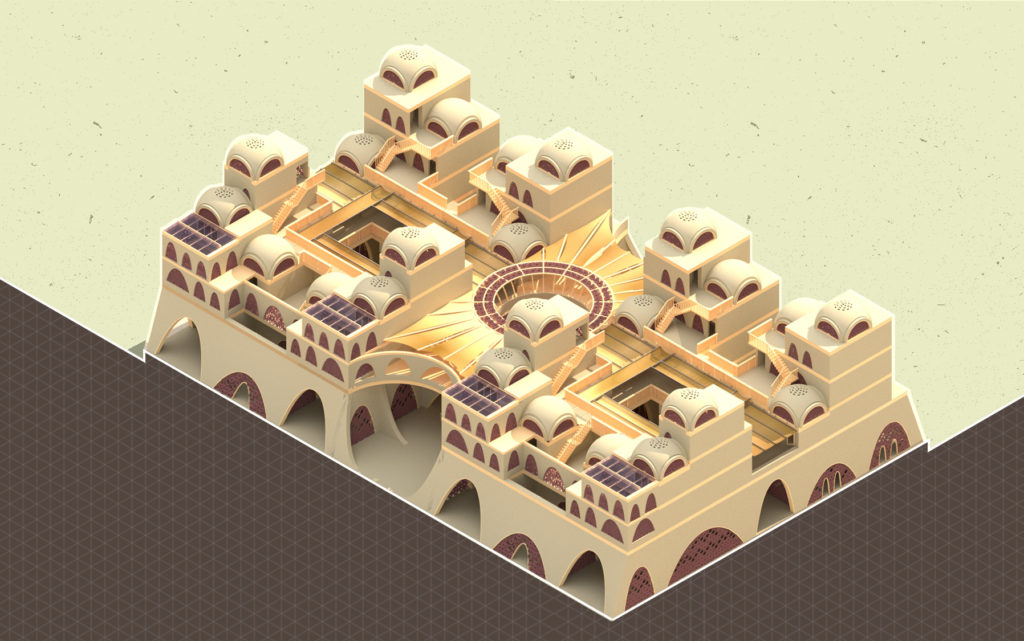Aswan, Egypt being a desert city shows diurnal aspects of climate on a daily basis. The same also affects the day to day activity pattern of the community that adapts to the climate at any given time. This analysis indicates at a close relation between climate, people & their clothing & eventually it traces ahead to architectural aspects in terms of materiality, spaces & masses.
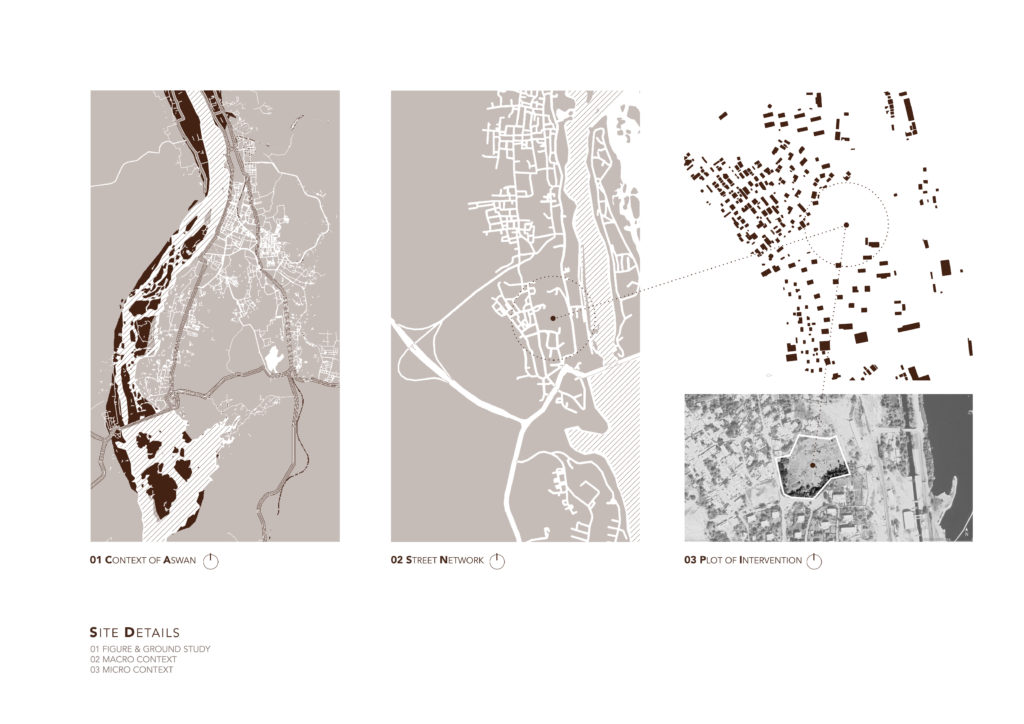
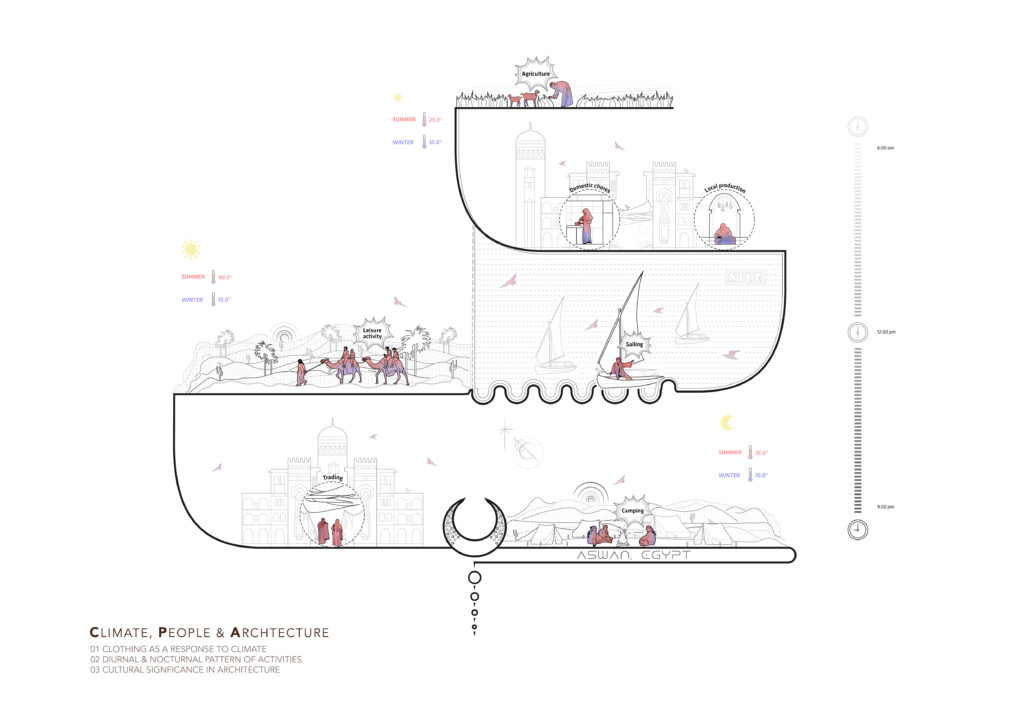
The basic massing is based on the principles of a voxel which further gets cumulatively converted to residential units. Volumetrically, ground level is zoned for commercial component that keeps the private zone of residences in isolation from the pedestrian traffic.
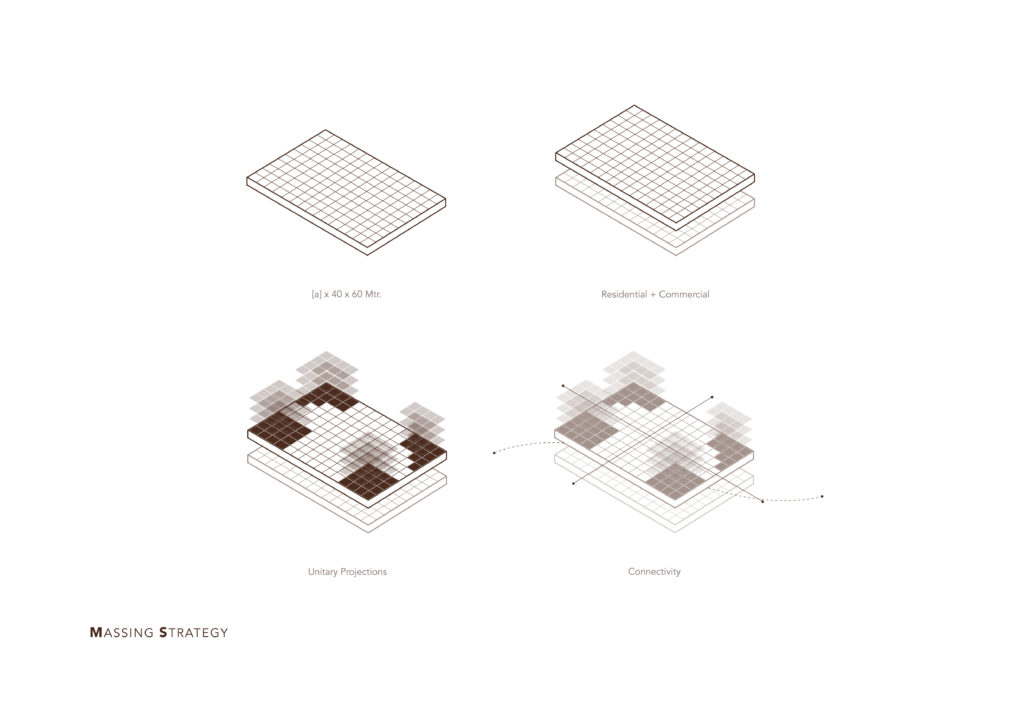
A study of climate responsive solutions leads to a basic categorization of strategies to be incorporated in the design which evidently affect the thermodynamics of the building. The North – South wind corridor becomes a prime aspect to be catered to and hence the section opens up at these two faces with buffer spaces to ensure a cool & free passage of the prevailing winds. The singular units are planned with an approach of considering them as individual prototypes [x3] that eventually get clustered to form the overall built form.
Courtyards play a major role climatically as well as socially. Considering the constant exposure of the space to sun throughout the day, courtyards are provided with retractable textile roofing to ensure compacity during day time & can open in the night to increase the porosity in order to let out the radiations.
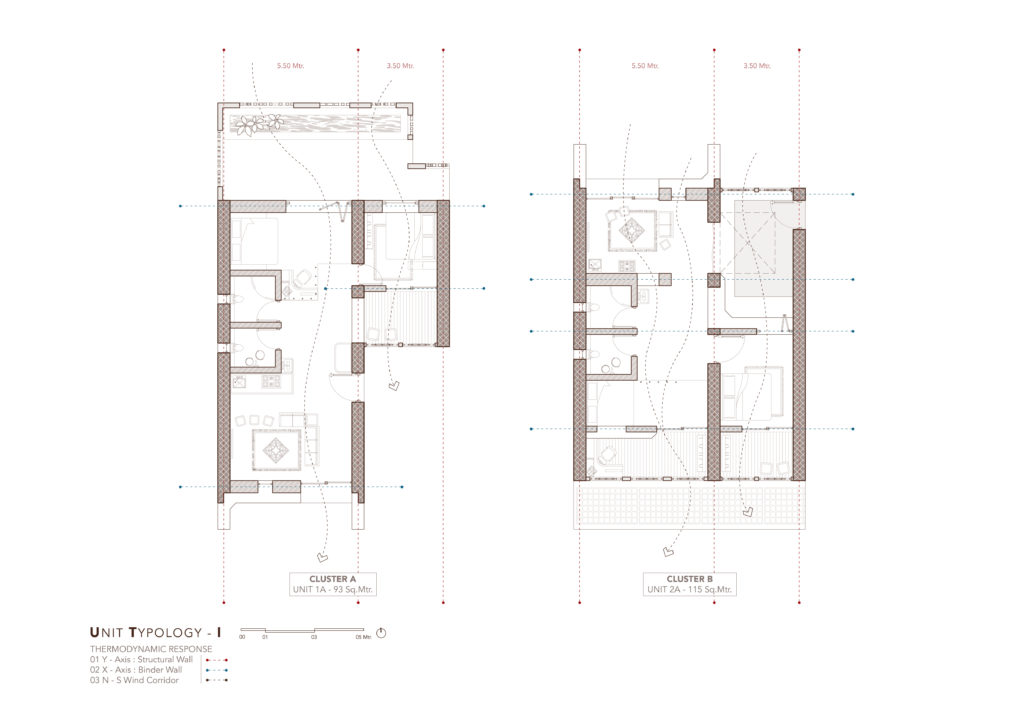
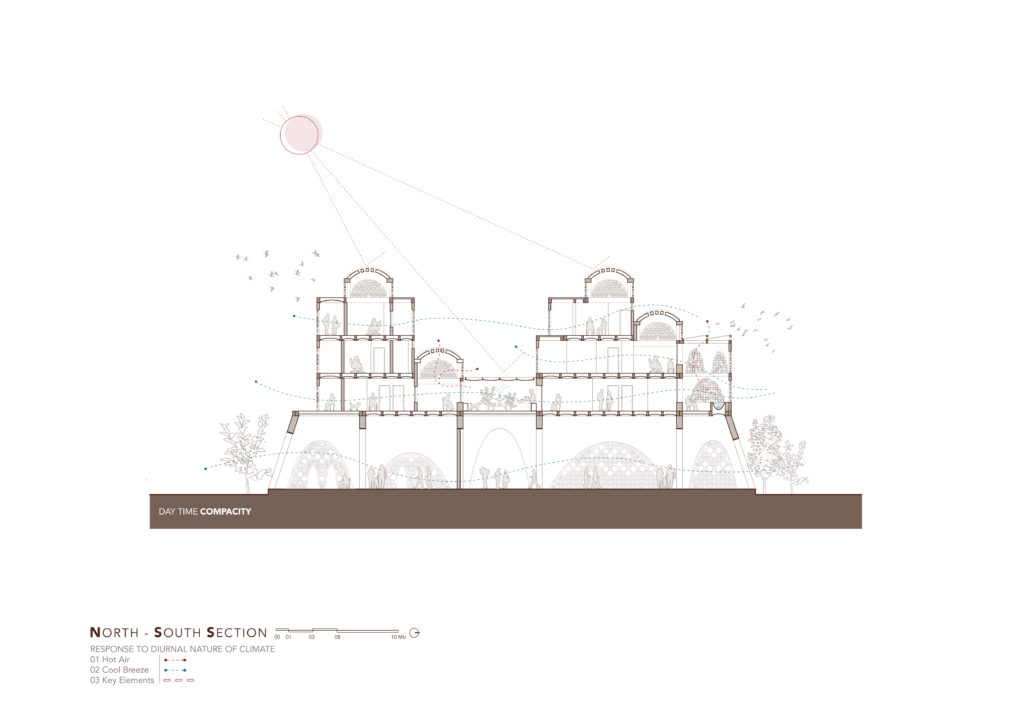
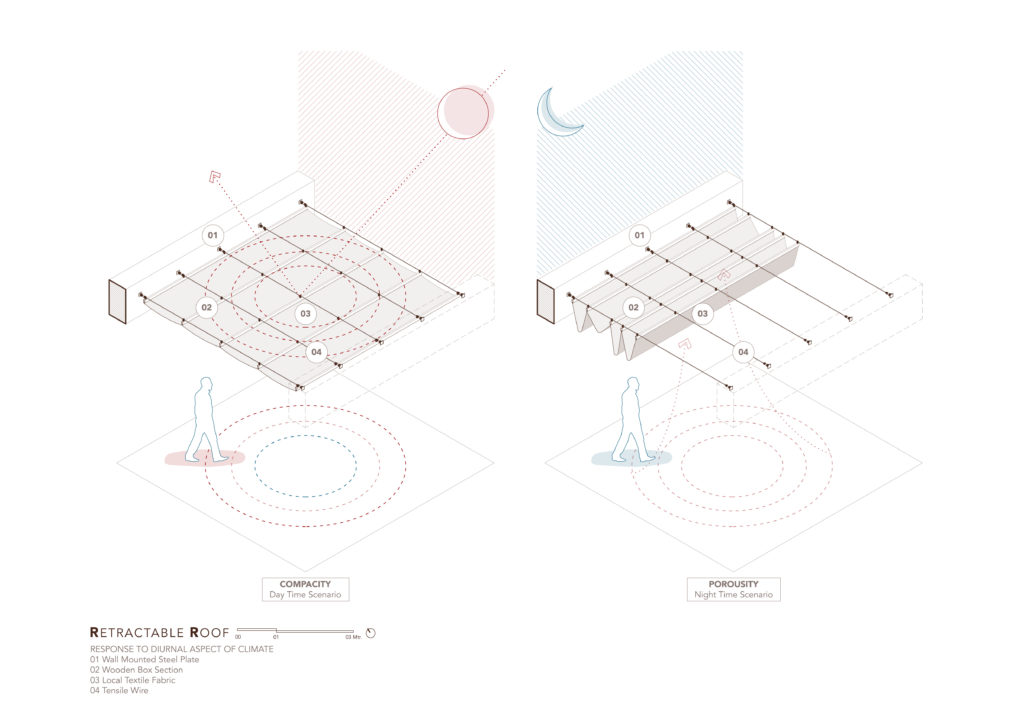
A load transfer study for Catenary arches is carried out to define the geometry of each arch in the commercial component. The same also leads to the zoning of commercial area & hence the structure plays a vital role in designing the spaces. Eventually the ground floor is designed in a way that responds actively to the Urban Utopia not just through program allocation but also by zoning out vehicular access programs & pedestrian access programs in a way that compliments the larger urban intervention. An open plan at the ground level is contradicted by a clustered residential component on the upper floors. Defined catenary arches play a major role in ensuring the structural stability considering a heavy massing planned on top of a light looking ground structure.
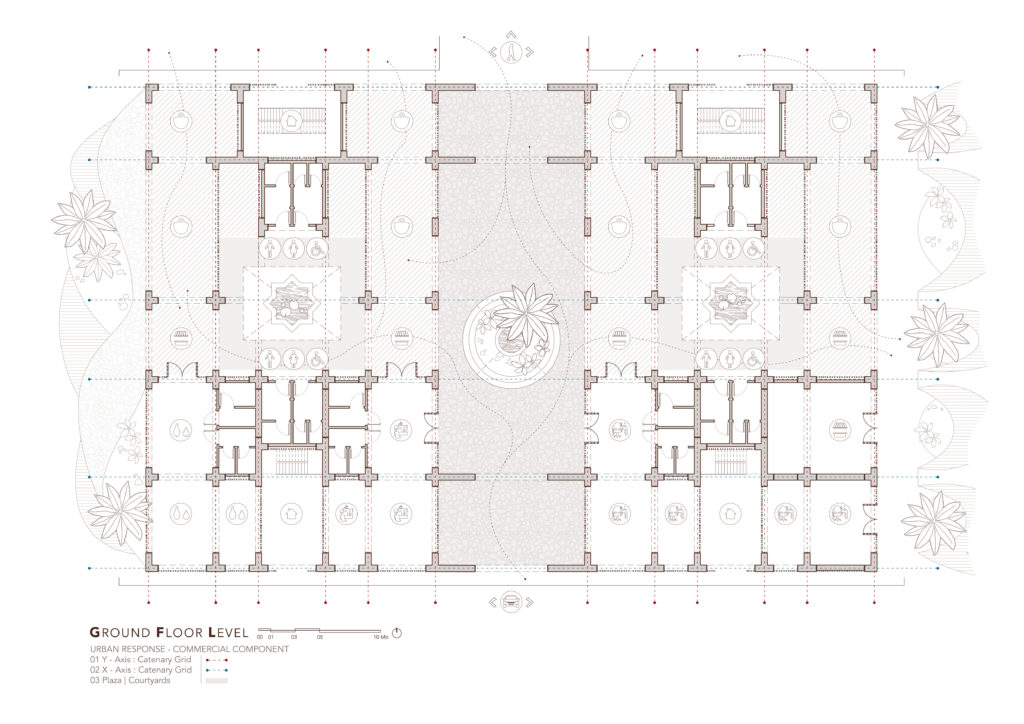
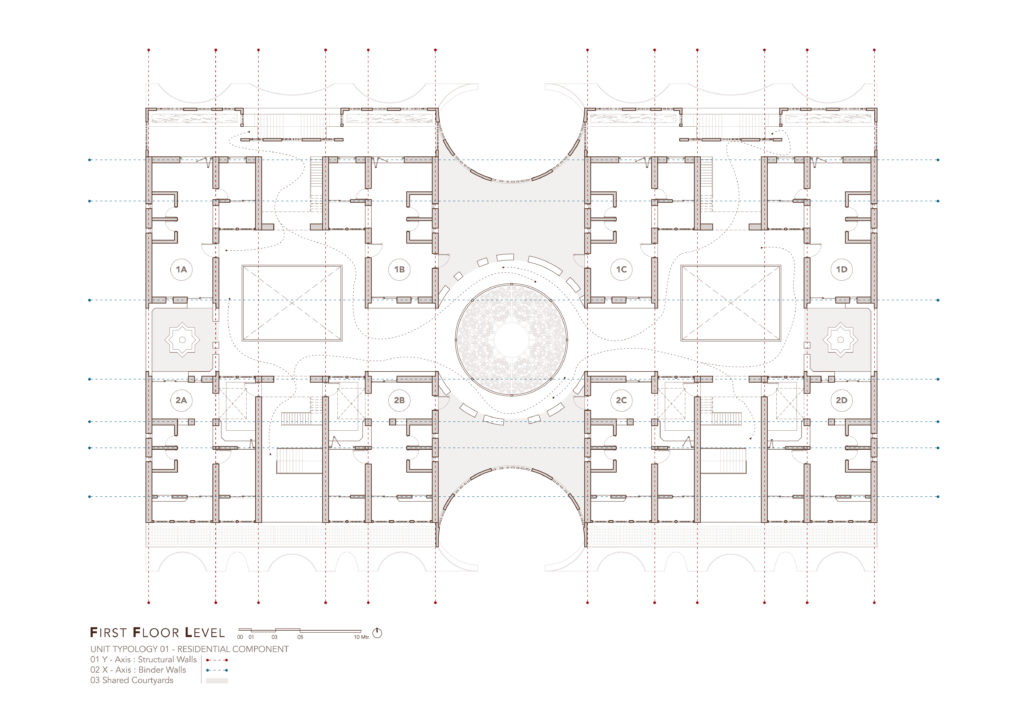
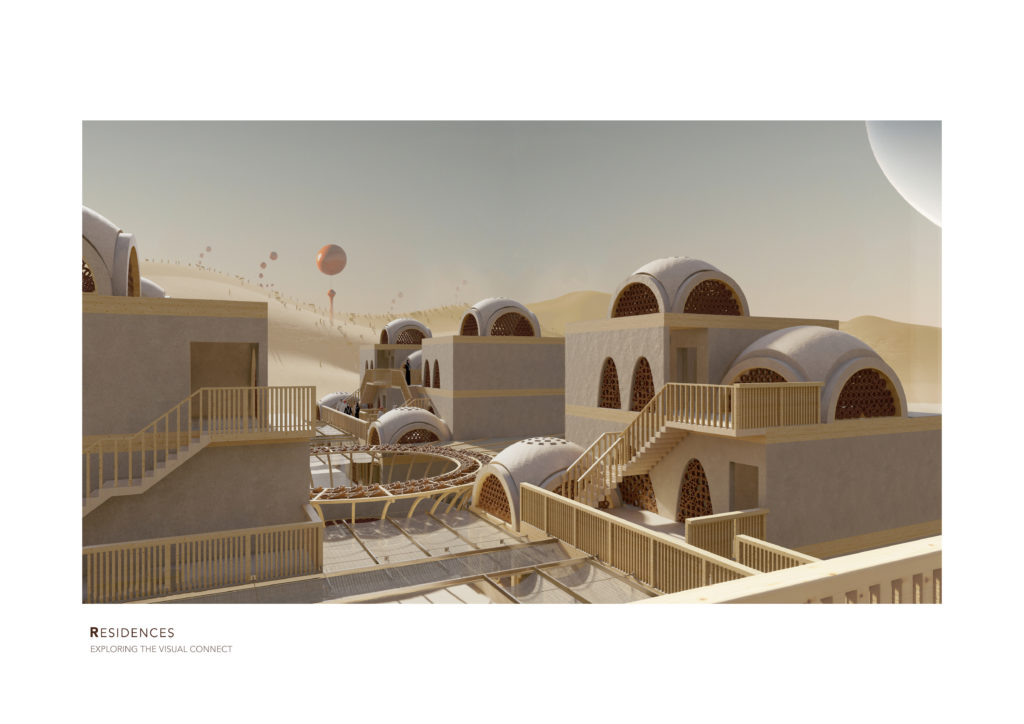
As a design element, courtyards follow a hierarchy in the structure in terms of the grades of privacy. For the commercial component, courtyards open ups the space volumetrically that compliments the activities of bazaars & street food kiosks. The oasis marks the central node of the design that connects all programs which open up further in smaller courtyards. These courtyards house the smaller water bodies that not only enhances the space visually & climatically but also functions as tertiary water treatment & hence is an integral part of the system.
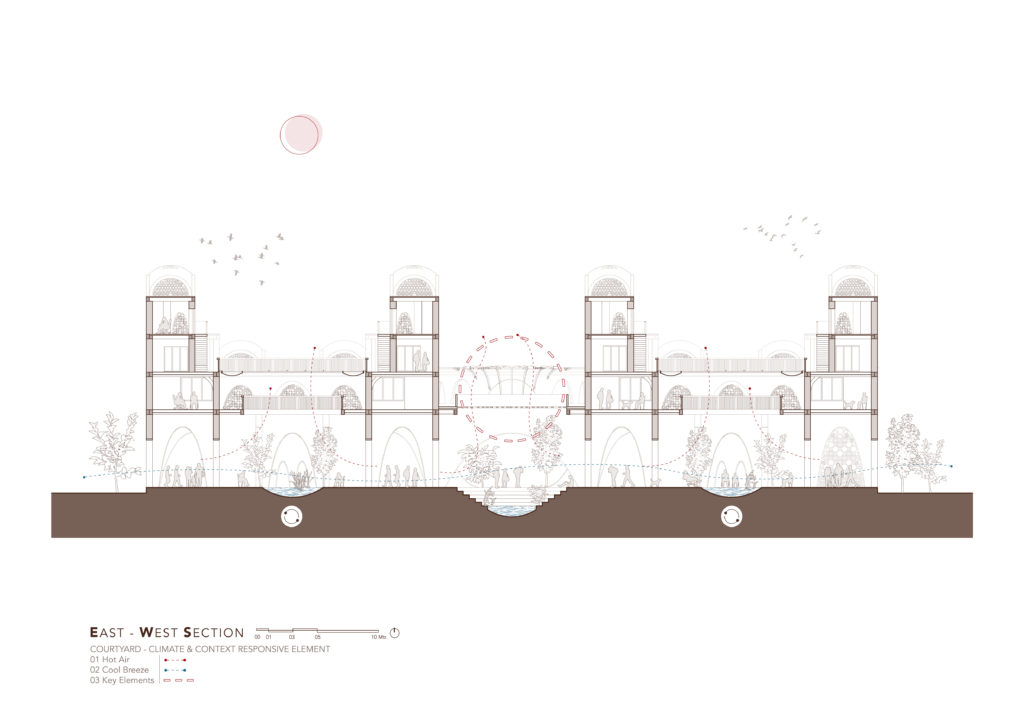
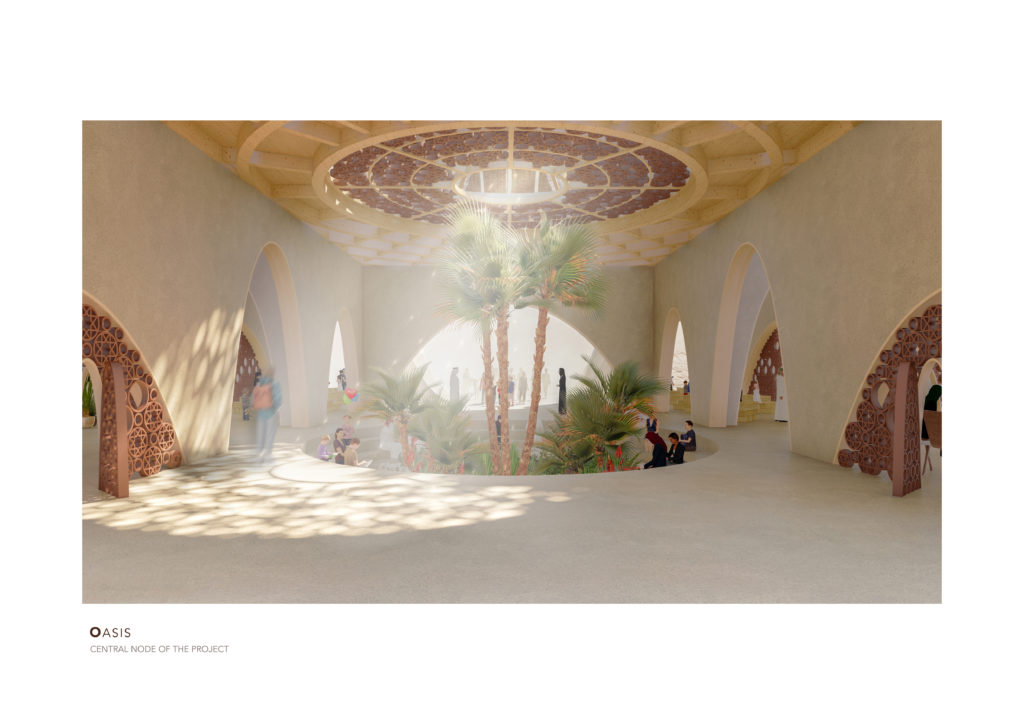
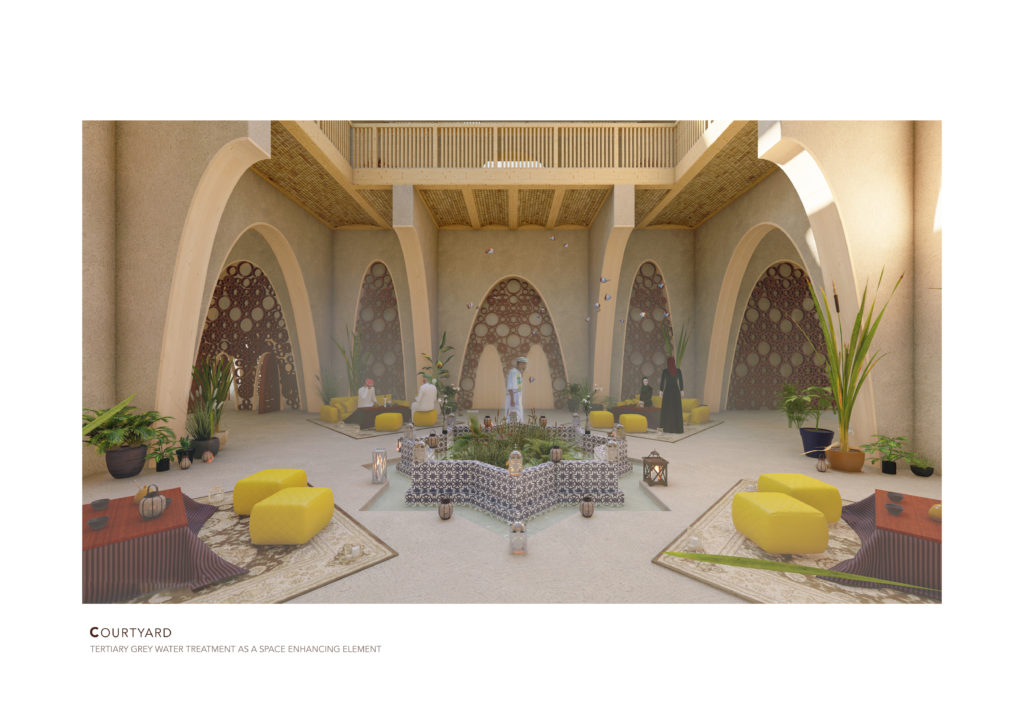
Envelope system of the building is an element that converges the concepts thermodynamics as well the structural decisions. A double skin system sees a terracotta lattice work on the facades which are followed by buffer spaces for evaporative cooling on north face & covered balconies on south face. The residential walls are thick thermal massing walls. Even though the thickness is same, a difference in usage of type of brick & detail differentiates between a structural & a binder wall.
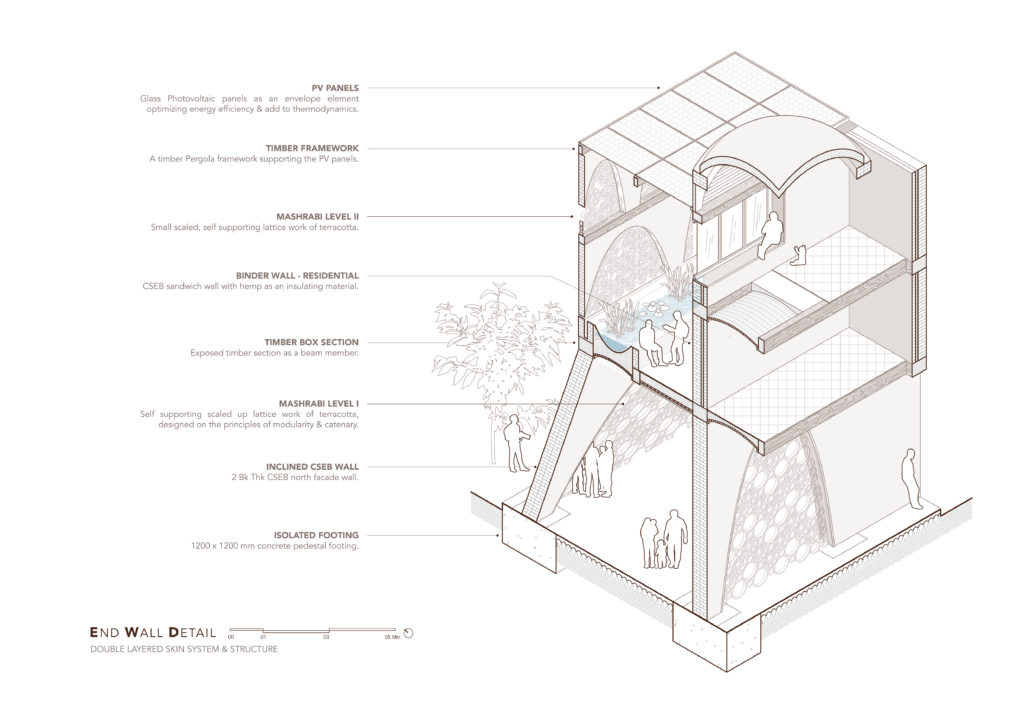
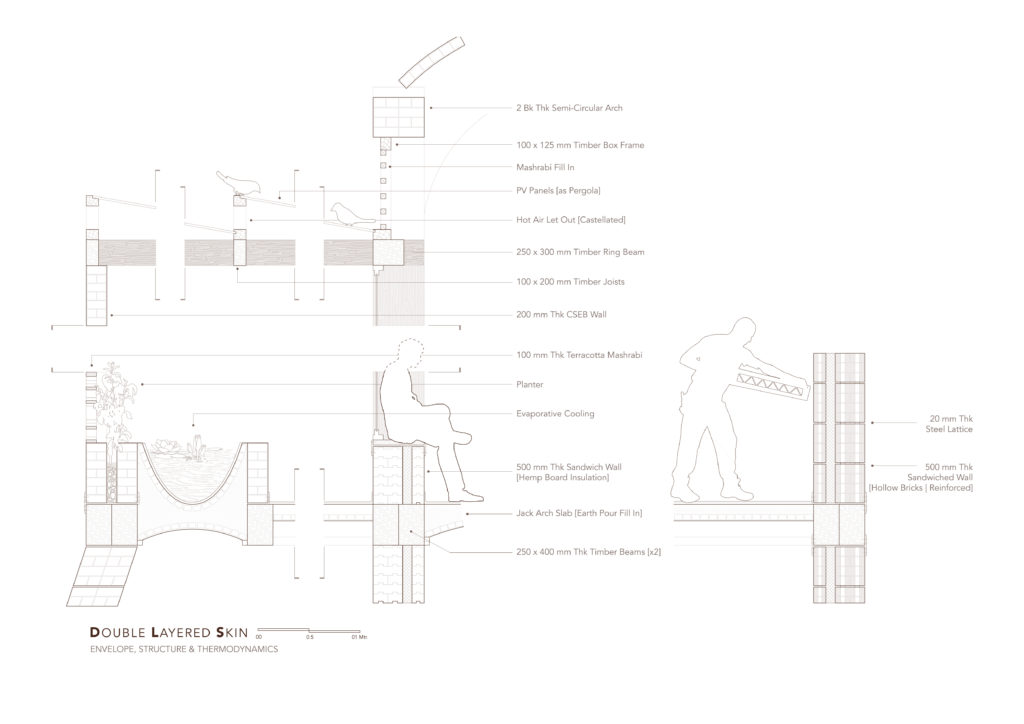
For the external lattice work, a traditional pattern of Mashrabiyan is installed. The principles of catenary are applied to the traditional squarish pattern & hence circular moulds are designed in order to have a modular yet unique pattern that compliments the overall form with least wastage of material. The grid work in the lattice now follows not only aesthetics but also functions structurally as bracings adding to its relevance in the design.
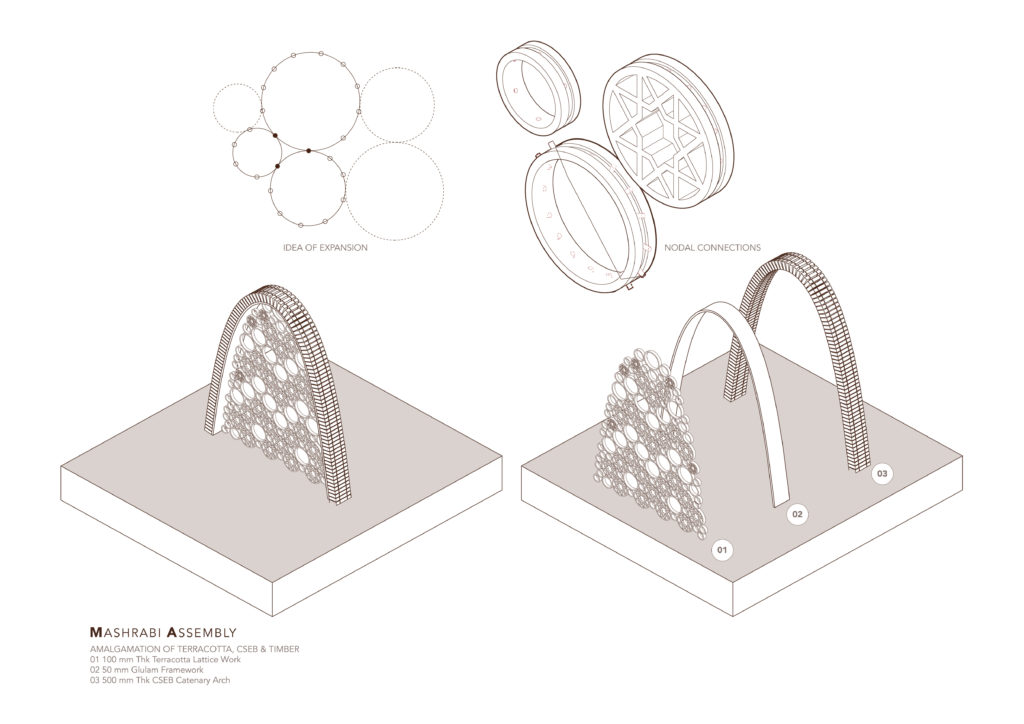
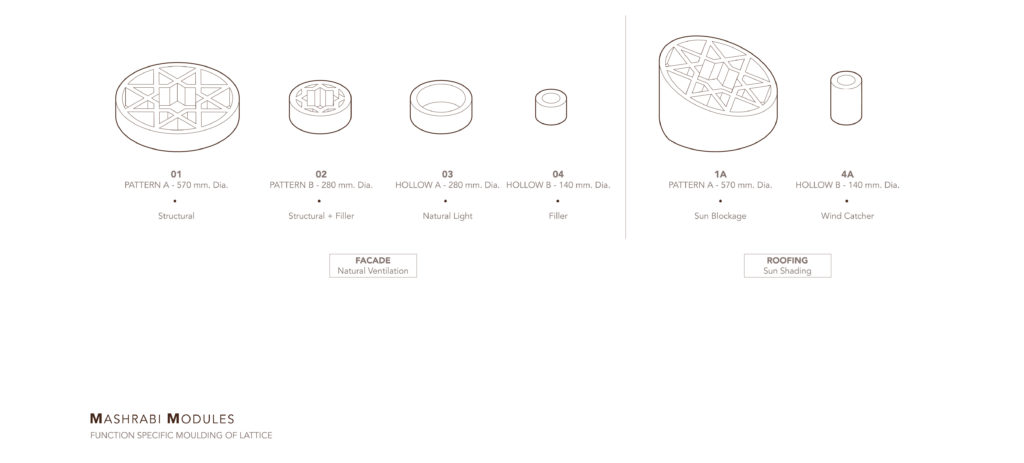
The projects aims to function not only as a programming intervention but as a catalyst that re-establish the identity of the people of Aswan & what they used to term as their homes.
